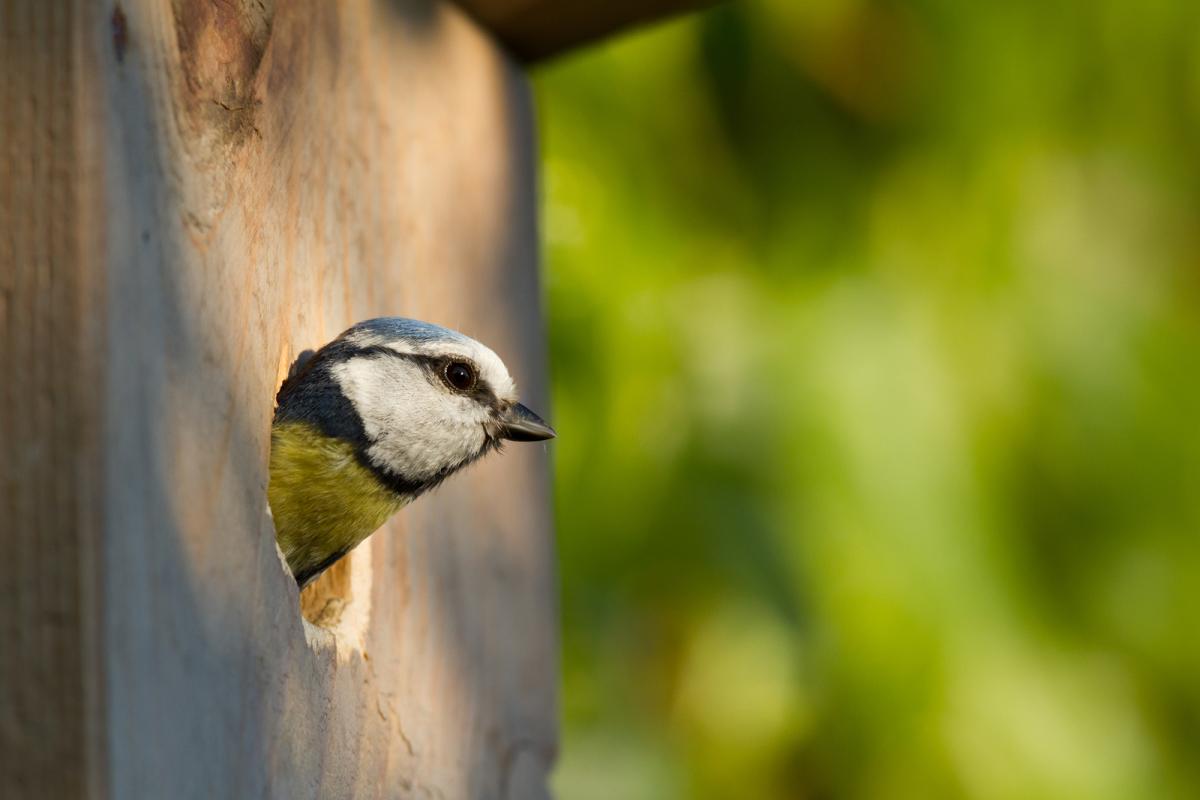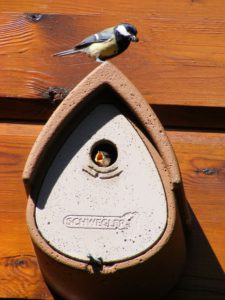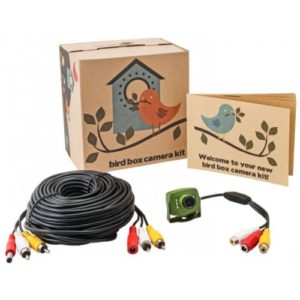
Gardens are an important nesting habitat for many of the UK’s best-known birds, such as sparrows, blackbirds, robins and tits. As natural nesting sites such as tree cavities become scarcer, and buildings become more energy-efficient with fewer appealing nooks and crannies, nest boxes can offer a useful alternative.
In this post we explain the different types of nest box favoured by garden birds, and what you should consider when choosing one.
Bird boxes come in a range of shapes and sizes to suit many different species. Your choice of box will depend on what species you want to encourage. As well as the basic box type you also need to consider entrance hole size, predator protection and what the box is made from.
So far we have considered choosing a box from the bird’s perspective, but there are one or two things to think about that might increase your own enjoyment!
Some boxes will have a flat back to allow them to be easily installed on a wall with a hook and nail such as this product. These are especially suited to patios, balconies and walls, where it is easy to watch the parent birds at work. If you cant find a spot to watch them from the outside, installing a camera kit will allow you to watch all the action from inside the box, and at the size of a matchbox, it fits perfectly in any bird box!
Depending on where the box is installed, you might want to consider how easy it is to clean. Some come with a removable front panel, or even a sliding aluminium plate so you can inspect the nest and replace it without touching it.
Finally, don’t forget to make your garden a safe haven for birds in other ways. Leave some wilder patches for caterpillars and seed heads, and try not to use pesticides unless absolutely necessary.
Garden bird numbers are on the decline
Gardens are an important nesting habitat for many of the UK’s best-known birds, such as wrens, blackbirds, robins and tits. However, The British Trust for Ornithology's (BTO) Garden Birdwatch survey has found that some of these familiar species, including the house sparrow, greenfinch and starling, have undergone population declines in recent years. There are undoubtedly many reasons for these declines, but at least a part of the mix is that natural nesting sites are becoming scarcer. Both in gardens and the wider countryside, old trees with safe cavities for nesting can be hard to find. Many garden birds also nest in the nooks and crannies of buildings, and as these are becoming more energy-efficient, they offer fewer such opportunities. Not every bird likes to use a bird box (thrushes, collared doves, woodpigeons, goldcrests and long-tailed tits invariably do their own thing!) but for those that do, a nest box in the garden can provide a useful alternative. What's the right box for you?
What's the right box for you?
Bird boxes come in a range of shapes and sizes to suit many different species. Your choice of box will depend on what species you want to encourage. As well as the basic box type you also need to consider entrance hole size, predator protection and what the box is made from.
1. Box type:
- Open-fronted nest boxes are used by blackbirds and robins but can be susceptible to predation of not carefully located.
- Enclosed boxes have a contained brood chamber accessed by an entrance hole that determines the size of the species that can use it. These are used by tits, sparrows, nuthatches and starlings.
- Specialist boxes are available for owls and other raptors, and for species with particular requirements such as swifts, kingfishers and wagtails, but we won't consider these further in this post.
- To encourage wrens, Schwegler has a specially-designed spherical Wren House.
2. Entrance hole size:
- 32mm hole - the most common 'all purpose' nest boxes have a 32mm diameter hole, which is accessible to small cavity-nesting species such as house sparrows, blue tits, great tits, and nuthatches. In some parts of the UK you might also attract redstarts and pied flycatcher.
- 26mm hole - if you want to cater specifically for blue tits then a smaller 26mm diameter will exclude other species. Marsh and coal tits are also small enough for these holes.
- 45mm hole - this larger hole will allow access to starlings, as well as the smaller species
- An oval hole or multiple holes - will provide light to encourage species that like open-fronted boxes to nest in more protected environments.
3. Predator protection:
In areas with a lot of predators, nestlings might need extra protection, which can be achieved in a few different ways. Cats are one of the biggest threats to garden birds, and there are many steps that can be taken to deter cats and other common mammals humanely.
- Location – open-fronted boxes, in particular, should be hung with the entrance at right angles against an outside wall where human activity deters cautions predators.
- Extended entrance holes – some boxes have built-in predator protection in the form of an extended entrance hole that makes it difficult for cats to reach inside.
- Extra deep nest boxes - have multiple entrance holes to increase light and encourage birds to nest at the back of the box, away from cats claws.
- Attachment – boxes that can be freely suspended, such as the Schwegler nest boxes, are protected against all but the most athletic of cats!
4. Box material:
- Woodcrete and Wood-Stone are proprietary mixes of concrete and wood shavings. Each manufacturer has their own blend, however, Schwegler products have a long life with warranties up to 25 years. Wood-concrete mixes don’t warp, leak or rot, and are breathable and thermally stable. However, they can be very heavy and are brittle so chip or crack if dropped.
- Wooden boxes are more traditional in appearance, and there are many ornamental designs for gardens. However, depending on where they are located and what timber is used, they are prone to rotting and may have a lifespan of just a few years. Wooden box holes can be enlarged easily by woodpeckers and squirrels. Make sure only non-toxic preservatives are used.
- Plywood boxes suffer the same issues as wooden boxes. They should be made from a marine or weatherproof grade ply or they will quickly delaminate.

 What about your requirements?
What about your requirements?
